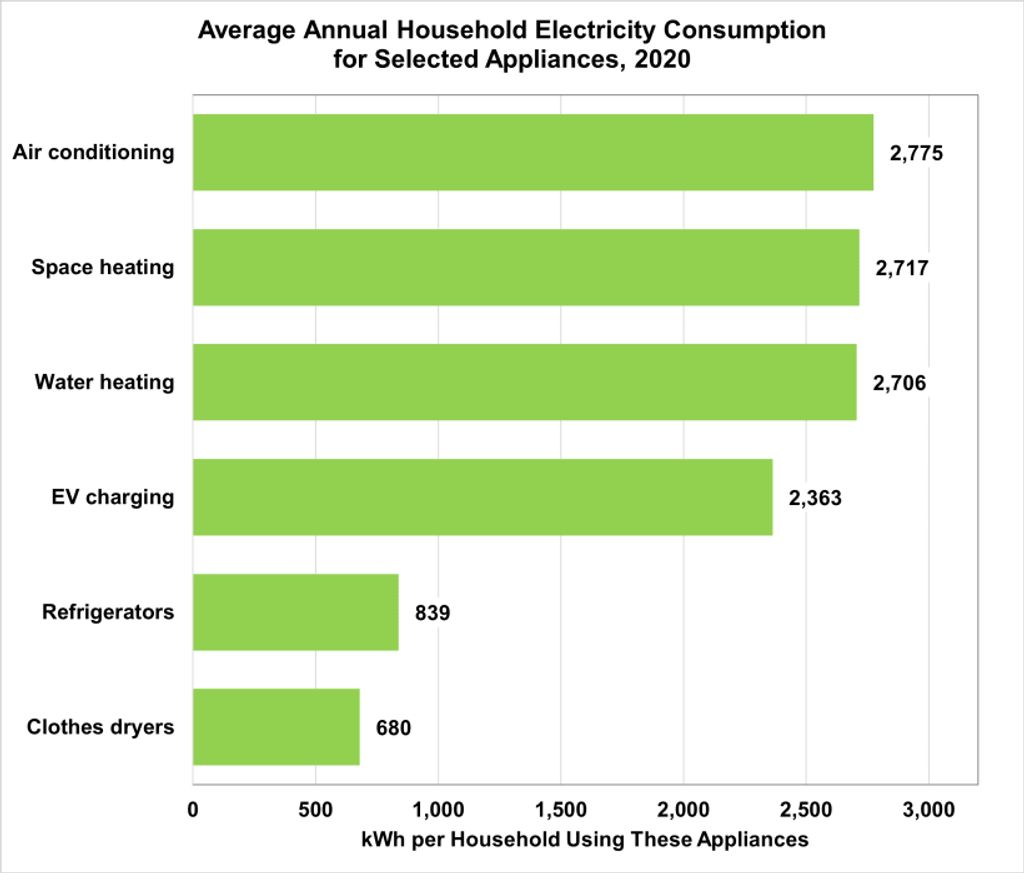Buying an electric vehicle might significantly affect electricity consumption and bills, but as it turns out, typically it’s not the biggest load in a household.
New data from the 2020 Residential Energy Consumption Survey, highlighted by the Department of Energy (DOE)’s Vehicle Technologies Office, indicates that there are three other appliances that, on average, consume even more electricity.
The top three, each above 2,700 kilowatt-hours annually per household, are air conditioning – including air handlers for cooling (2,775 kWh), space heating – primary and secondary, as well as air handlers for heating (2,717 kWh) and water heating (2,706 kWh).
According to the report, an electric vehicle charging in US homes is, on average, the fourth biggest load at 2,363 kWh.
Of course, the exact energy consumption varies significantly between households depending on many factors, but it’s very interesting that EV charging is behind air conditioning.
It just shows that we should not consider EV charging as the main thing that increases energy consumption of an average household. It will increase the consumption, quite noticeably, but charging may not necessarily be the primary load.
Another thing is that EV charging usually takes place (or at least can take place) during the night (off-peak hours for electricity consumption), which lightens/flattens the grid load.
Assuming the EPA Combined energy consumption of the Tesla Model Y (currently the most popular model in the US), in the Long Range AWD version at 122 MPGe (an equivalent of 276 watt-hours per mile, including charging losses), it seems that 2,363 kWh would last for over 8,500 miles per year.
That does not seem to be particularly high mileage, but that’s what the data indicates as the average in 2020. Those who drive a lot will notice that electric vehicle charging consumes more than all other electrical appliances combined.
We are eager to see how this number might change in the future. Maybe new editions will reveal higher estimated energy consumption, as there are more and more long-range EVs on the market, and perhaps the average driving distance will increase.
More about the data can be found here: U.S. Energy Information Administration, 2020 Residential Energy Consumption Survey, Detailed end-use consumption and expenditure estimates, Tables CE5.3a & CE5.3b, June 2023.


